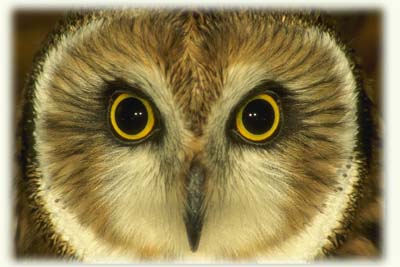|
 News News
 Subscribe to Our Newsletter Subscribe to Our Newsletter
 Sign up for Email Updates
Sign up for Email Updates
 CGF In the News
CGF In the News
 Press Inquiries Press Inquiries
 Past Articles Past Articles
 Calendar Calendar
|
|
|
North Wavecrest: A valuable habitat for raptors
by Gary Deghi
Raptors are what
we typically think of as the birds of prey: hawks, eagles, falcons and owls. To a raptor traveling along the coast, the North Wavecrest area in Half Moon Bay seems a veritable smorgasbord. This area has everything
a hawk could want: mature trees that provide perching and roosting sites, grasslands that provide foraging habitat, riparian corridors and coyote brush in fields that provide cover, and an abundance of voles that
serve as a source of prey.

The North Wavecrest area is considered by
Sequoia Audubon Society (SAS) as the most important habitat for wintering raptors
in San Mateo County, as it supports a greater diversity of raptors and number of individuals than any other site. A portion of North Wavecrest is the site of the proposed Wavecrest Village Project,
a large residential and commercial project, including a new middle school and Boys' and Girls' Club, currently being reviewed on appeal by the
California Coastal Commission (CCC).
My objective in writing this article is to inform readers about the effect the Wavecrest Village Project would have on raptor
populations so that informed comment can be delivered when a decision is to be made on this project by the CCC later this year.
I presented data to the CCC last year that summarized results of
Christmas Bird Counts conducted in the North Wavecrest area each winter by SAS beginning in 1988. The data demonstrates extensive use by species such as red-tailed hawk, red-shouldered
hawk, white-tailed kite, Northern harrier, and American kestrel, and use also by sharp-shinned hawk, Cooper's hawk, great-horned owl, barn owl and short-eared owl. The value of the
site is enhanced when considering the rare and vagrant species that have been documented during the winter or in migration: this includes ferruginous hawk, rough-legged hawk, broad-winged
hawk, golden eagle, peregrine falcon, prairie falcon, merlin and Swainson's hawk (the first documented record of overwintering Swainson's hawk ever in coastal Northern California).
On the Christmas Bird Count conducted on December 16, 2000, a remarkable 65 raptor individuals were observed over the course of one day within the approximately 500-acre North
Wavecrest area that includes Wavecrest Village. This total consisted of 15 white-tailed kites, 10 Northern harriers, 1 sharp-shinned hawk, 4 red-shouldered hawks, 18 red-tailed
hawks, 9 American kestrels and 5 short-eared owls, and 3 barn owls.
The North Wavecrest area, including Wavecrest Village, also annually supports a wintering population of up to as many as six
short-eared owls. The short-eared owl is a large owl that lives only in grasslands and marshlands, and that has been designated as a species of special concern in California due to serious
declines in numbers caused by conversion of grasslands to urban sprawl and agriculture. North Wavecrest is the most important wintering site for short-eared owl in San Mateo County, and is
one of the most important wintering sites for the species in the greater San Francisco Bay region. When only coastal sites supporting wintering populations of short-eared owl are
considered, the importance of the area takes on statewide significance.
The short-eared owls roost during the day in the grasslands of North Wavecrest, and they forage at night over the entire North
Wavecrest area, including the proposed Wavecrest Village. Development of Wavecrest Village would destroy approximately one-third of the foraging habitat for the wintering population of
short-eared owls, compromising the viability of this population. Because much of the remaining habitat within North Wavecrest is privately owned and subject to future development, the
cumulative impact of the project is essentially the elimination of this wintering site for short-eared owls and other raptor populations.
The best way to mitigate these impacts is to limit the amount of
open grassland impacted by the project, preferably by selecting alternative sites. I would like to see my 9-year old son benefit from a facility for Coastside youth, and I would like for him to
have the opportunity to attend a new middle school in the coming years, but not at the North Wavecrest site, and not at the cost to the environment that would result from the Wavecrest Village Project.
Gary Deghi is a wildlife ecologist, professional environmental consultant, member of the Board of Directors of Sequoia Audubon Society, and former member of the Half Moon Bay City Council.
Published May 2002 in Green Footnotes.
Page last updated May 16, 2002 . |
|
![]()
![]()




